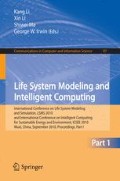Abstract
Monitoring of ship pipeline leakage detecting is one of the most important techniques to be developed as it can help to prevent damages of ship working safe. Negative pressure wave technique is an effective method for paroxysmal fluid leakage detection and location. However, it is difficult to distinguish sources which led to the fluid pressure drop. In order to solve the problem, wavelet transform algorithm was adopted to define inflexion of the negative pressure wave when it propagates along the pipe, and wavelet threshold denoise technique was used to separate the characteristic inflexion of negative pressure wave when calculating the leaking position. A new pipeline detection and location system on the basis of that was developed.
Access this chapter
Tax calculation will be finalised at checkout
Purchases are for personal use only
Preview
Unable to display preview. Download preview PDF.
References
Kiuchi, T.: A Leak Location Method of Pipeline by Means of Fluid Transient Model. Journal of Energy Resource Technology, 115 (1993)
Li Kun, W., Cuiyun, Z.Y.J., Li, Z., Shijiu, J.: Development of a New Leak Monitoring & Location System for Oil Transport Pipelines. Computer Measurement & Control 10(3), 152–155 (2002)
Shensa, M.J.: The discrete wavelet transform: wedding the a trous and Mallat algorithms. IEEE Transactions on Signal Processing (see also IEEE Transactions on Acoustics, Speech, and Signal Processing) 40(10), 2464–2482 (1992), doi:10.1109/78.157290
Mallat, S., Hwang, W.L.: Singularity detection and processing with wavelets. IEEE Trans. on Information Theory 38(2), 617–643 (1992)
Mallat, S., Zhong, S.: Character of signal frommultiscale edbes. IEEE Trans. on Pattern Anal. Mach. on Intell. 14(7), 710–732 (1992)
Hallatschek, K., Zilker, M.: Real time data acquisition with transputers and PowerPCs using the wavelet transform for event detection. IEEE Transactions on Nuclear Science, Part 1 45(4), 1872–1876 (1998)
Hao, X., Bai, Y., Cui, Z.: Signal processing method of correlation detection for ranging system based on combined modulation. In: 7th World Congress on Intelligent Control and Automation, WCICA 2008, June 25-27, pp. 1373–1377 (2008)
Author information
Authors and Affiliations
Editor information
Editors and Affiliations
Rights and permissions
Copyright information
© 2010 Springer-Verlag Berlin Heidelberg
About this paper
Cite this paper
Peng, Z., Xie, X., Han, X., Fan, X. (2010). Application Research of the Wavelet Analysis in Ship Pipeline Leakage Detecting. In: Li, K., Li, X., Ma, S., Irwin, G.W. (eds) Life System Modeling and Intelligent Computing. ICSEE LSMS 2010 2010. Communications in Computer and Information Science, vol 97. Springer, Berlin, Heidelberg. https://doi.org/10.1007/978-3-642-15853-7_7
Download citation
DOI: https://doi.org/10.1007/978-3-642-15853-7_7
Publisher Name: Springer, Berlin, Heidelberg
Print ISBN: 978-3-642-15852-0
Online ISBN: 978-3-642-15853-7
eBook Packages: Computer ScienceComputer Science (R0)

